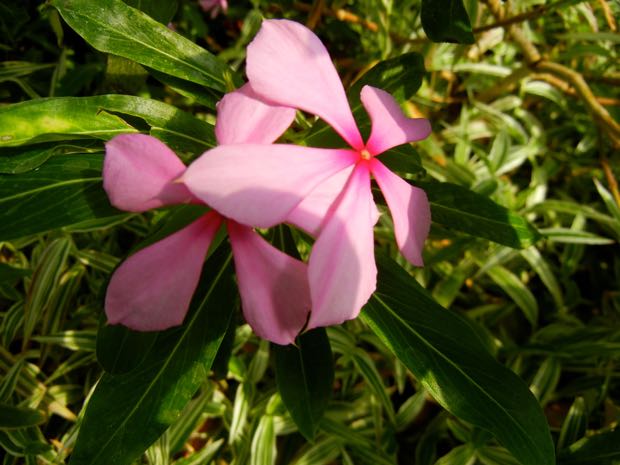Catharanthus roseus, commonly known as Madagascar Periwinkle or Rosy Periwinkle, belongs to the Apocynaceae family of plants. This captivating species showcases pink flowers with five delicate petals and is characterized by its dark green, leathery foliage. Let’s explore this plant in more detail:
Background: Catharanthus roseus, native to the island of Madagascar, has gained popularity both as an ornamental plant in gardens and as a valuable medicinal plant. With its vibrant blooms and evergreen nature, it has captured the attention of gardeners worldwide. However, it is important to note that this plant possesses a toxic sap, so caution should be exercised when handling it.
Medicinal Uses: Catharanthus roseus has a rich history in traditional medicine, particularly in Chinese herbal medicine. It has been used to treat various ailments, including diabetes, malaria, and high blood pressure. More recently, the plant garnered significant attention due to its discovery of alkaloids that have shown promise in chemotherapy treatment for several types of cancer, including childhood leukemia. These alkaloids, such as vinblastine and vincristine, have become vital components in cancer-fighting drugs.
Madagascar Periwinkle is an evergreen herbaceous sub-shrub, meaning it maintains its green foliage throughout the year and has a semi-woody stem. The dark green leaves are leathery, providing an attractive backdrop for the vibrant pink flowers. The flowers themselves consist of five petals and can vary in shade from pale pink to deep rosy hues, creating a stunning visual display.

How to grow Catharanthus roseus:
Sunlight: Catharanthus roseus thrives in full sun to partial shade, requiring a minimum of six hours of direct sunlight daily. It is adaptable and can tolerate various light conditions but tends to produce more prolific blooms when exposed to ample sunlight.
Soil: Plant Madagascar Periwinkle in well-drained soil that is rich in organic matter. A sandy or loamy soil texture is preferable, as it allows for proper drainage and prevents waterlogged conditions that may lead to root rot.
Propagation: Catharanthus roseus can be propagated from both seeds and cuttings. If starting from seeds, sow them in a suitable seed-starting mix and maintain a warm environment to facilitate germination. Cuttings taken from mature plants can be rooted in a well-draining medium, ensuring the cut end is treated with a rooting hormone to enhance successful establishment.
Toxicity: It is crucial to exercise caution when handling Catharanthus roseus due to its toxic sap. The sap can cause skin irritation and is harmful if ingested. It is advisable to wear gloves when working with this plant and to keep it out of the reach of children and pets.
Frost Sensitivity: Madagascar Periwinkle is not frost-tolerant and cannot withstand freezing temperatures. It is best suited for cultivation in areas with a mild climate or as an annual in colder regions.
With its captivating flowers, evergreen foliage, and notable medicinal properties, Catharanthus roseus is a versatile and intriguing plant to cultivate. Whether used as an ornamental addition to gardens or appreciated for its valuable contributions to cancer treatment, this species offers both beauty and scientific significance. By providing it with ample sunlight, well-drained soil, and appropriate care, you can enjoy the vibrant blooms of Madagascar Periwinkle and appreciate its remarkable attributes.



